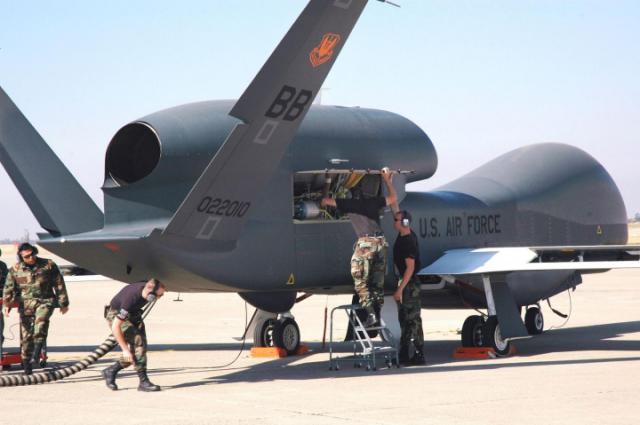The Pentagon is fuming.
Nightmare: Iran’s Takedown of an American Drone Is a Real Problem
U.S. Central Command clarified that the drone was a Navy Broad Area Maritime Surveillance Demonstrator, a prototype naval variant of the 737-size Global Hawk. BAMS-D carries cameras and a radar and is designed to swoop between high and low altitudes, alternately scanning wide areas for ships then individually identifying them.
The shoot-down of a U.S. Navy surveillance drone on June 20, 2019 underscores a weakness in the Pentagon’s surveillance forces.
Aside from a few classified vehicles, the U.S. military largely relies on slow, non-stealthy manned and unmanned aircraft for intelligence, surveillance and reconnaissance. Those ISR systems are vulnerable to the latest Iranian, Chinese and Russian air defenses.
The Iranian Revolutionary Guard Corps claimed it shot down a “U.S.-made Global Hawk surveillance drone” flying in Iranian air space near the Strait of Hormuz.
(This first appeared in June 2019.)
U.S. Central Command clarified that the drone was a Navy Broad Area Maritime Surveillance Demonstrator, a prototype naval variant of the 737-size Global Hawk. BAMS-D carries cameras and a radar and is designed to swoop between high and low altitudes, alternately scanning wide areas for ships then individually identifying them.
Northrop built four BAMS-D drones starting in 2008. The Navy has stationed two of them in the United Arab Emirates for operational use as it prepares to deploy the full MQ-4C naval version of the Global Hawk starting in late 2019.







